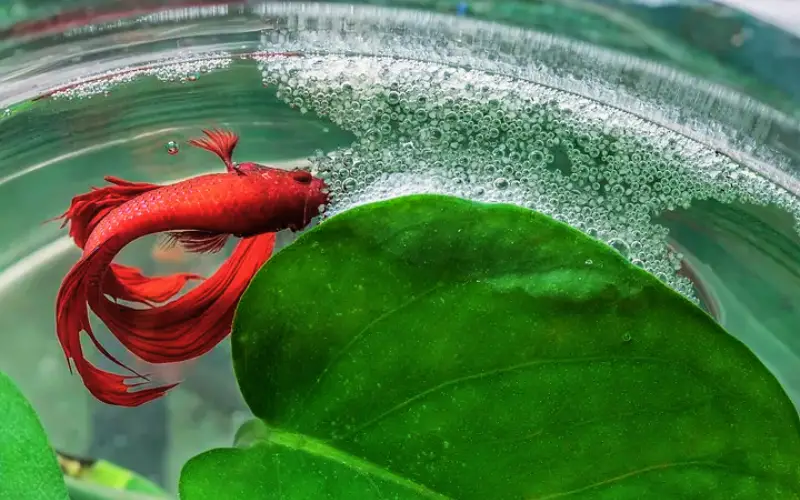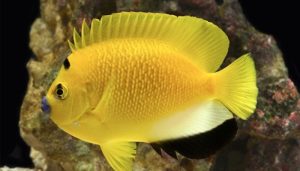Do female bettas make bubble nests? Learn the truth. If you’ve ever owned a betta fish, you might have noticed their fascinating habit of building bubble nests. But is this natural behavior exclusive to males, or do female betta fish make bubble nests too?
The short answer is no—female bettas rarely make bubble nests. Males build a bubble nest as part of their breeding instincts, creating a safe space for fertilized eggs.
However, in rare cases, females may blow bubbles, but these are not true nests meant for reproduction process.

But why do males do this, and what does it mean if a female does? Renowned betta expert Dr. Gerald Bass suggests that nest-building is tied to hormones and environment.
Let’s dive deeper into the science and uncover the real reasons behind this fascinating behavior!
Table of Contents
ToggleDo Female Bettas Make Bubble Nests?
In the world of betta fish, it is predominantly the male betta that takes on the responsibility of creating a bubble nest. Male bettas are known for their intricate bubble nest building, where they create a floating structure on the water’s surface using air bubbles and saliva.
However, female betta fish can occasionally exhibit nesting behavior, but it is much less common. While they may not typically make bubble nests like their male counterparts, female fish do participate in the breeding process by laying eggs in the nest constructed by the male betta fish.

This natural behavior highlights the collaborative nature of betta breeding, where both genders play distinct roles.
During the breeding cycle, female Siamese fighting fish may display behaviors that suggest they are preparing to spawn, such as flaring their fins and showing interest in the male’s bubble nest.
Although lady bettas do not usually build bubble nests themselves, their presence and interaction with the male can influence the overall nesting environment.
In a well-maintained aquarium with optimal water parameters, such as quality and temperature, female bettas are more likely to exhibit these behaviors. Therefore, while female bettas are less likely to make bubble nests, they can still contribute to the breeding process in significant ways.
Understanding The Behavior of Betta Fish During Bubble Nest Building
The behavior of betta fish during bubble nest building is a fascinating aspect of their reproductive cycle. Male bettas exhibit a strong instinct to create bubble nests as a means to attract females and ensure the survival of their offspring.
This behavior is deeply ingrained in their genetics, as these labyrinth fish rely on bubble nests to protect and nurture their eggs. When a male betta fish build bubble nests, he carefully selects a location, often at the water’s surface, where the eggs can be safely laid and retrieved by the male after fertilization.
Understanding the behavior of male bettas when ready to reproduce involves observing their interactions with female bettas. When a male encounters a female betta, he often flares his fins and displays vibrant colors to entice her to spawn.
If the female shows interest, she may swim close to the bubble nest, signaling her readiness to lay eggs. This courtship behavior is crucial for successful spawning, as the male must guide the female to the nest where she will deposit her eggs.
The entire process highlights the complex social interactions among bettas and the importance of maintaining proper conditions in the aquarium for successful breeding.
Why Is My Female Betta Making a Bubble Nest?
If you observe your female betta making a bubble nest, it can be both intriguing and puzzling. While it is uncommon for female bettas to engage in bubble nest building, there are a few reasons why this behavior might occur.
Stress or changes in the environment, such as fluctuations in water quality or changes in tank mates, can prompt a female betta to exhibit nesting behavior. In some cases, a female may feel the need to establish a safe space for herself, even in the absence of a male betta fish.
Another reason for this behavior could be the hormonal changes that female bettas experience during the breeding cycle. If a female is in breeding condition, she may instinctively start to create a bubble nest around the aquatic plants as an expression of her natural instincts, even if she is not paired with a male.
This behavior can also signal her readiness to spawn. Observing your female betta and understanding her actions can provide valuable insights into her well-being and stress levels. Ensuring that the aquarium conditions are optimal can help reduce stress and encourage healthier behaviors in your female betta fish.
How Can I Tell If My Betta Fish Is a Male or Female?
Identifying the sex of betta fish can be crucial for proper fishkeeping, especially when considering breeding or maintaining a betta sorority. Male bettas are generally more vibrant and colorful, exhibiting long, flowing fins that are often more elaborate than those of females.
In contrast, female bettas tend to have shorter fins and a more subdued color palette. Additionally, the body shape can be an indicator, as females usually have a rounder, more robust appearance compared to the slender frame of male bettas.
Another distinguishing feature is the presence of the egg spot, which is a white spot located near the anal fin of female fish. This spot is absent in male betta fish and serves as a clear indicator of a female’s reproductive status.
Observing the behavior of the fish can also provide clues; male bettas often display aggressive behaviors, such as flaring and establishing territories, whereas females are more likely to be passive.
By carefully observing these characteristics and behaviors, you can easily differentiate between male and female fish in your aquarium.
Can Female Betta Lay Eggs Without Male?
One of the more intriguing questions regarding betta fish behavior is whether a female betta can lay eggs without the presence of a male. The answer is yes; female bettas can lay eggs independently, but these eggs will not be fertilized and will not develop into healthy fry.
In the absence of a male, the female’s instinct to reproduce can still drive her to create eggs, but without fertilization, the eggs will not thrive. Therefore, while a female betta can lay eggs solo, the breeding process requires both male and female bettas to ensure successful spawning.
It’s essential to note that a female betta may still engage in nesting behaviors even without a male present. This can be a sign of stress or an instinctual reaction to her environment. Fish care plays a significant role in maintaining the health and well-being of your betta fish.
Providing a suitable habitat with ideal water parameters and avoiding overcrowding can help reduce stress and promote healthier behaviors in your female betta. Understanding these nuances can enhance your fishkeeping experience and ensure a thriving aquarium.
How To Perform Water Changes Without Destroying a Bubble Nest?
Performing water changes in a betta tank can be tricky, especially when you want to preserve the delicate bubble nest construction that your plakat or crowntail betta fish has crafted.
Betta splendens, known for their vibrant colors, often take great care in making these nests as they prepare to mate. To ensure the betta fish’s nest remains intact, it’s important to minimize water movement during the change.
Many times I’ve seen betta owners on betta fish forums recommend using a siphon with a gentle flow to avoid disturbing the bubbles created. You’ll often want to perform weekly water changes of about 20-30% to keep your betta happy and healthy without destroying the nest.
Additionally, when performing the change, it’s best to siphon the water from the bottom of the tank while leaving the upper water layer, where the air from the surface plays a crucial role in maintaining the nest.
If you’re ready to engage in this behavior, consider doing a deep dive into betta fish care to unravel the mysteries behind their nesting habits.
Remember that bettas need a stable environment, and keeping your betta’s surroundings as calm as possible will help protect those precious bubbles.
If you still haven’t showered after a long day, focus on the tank; your betta’s health is just as important as your own!
Conclusion
In conclusion, the behavior of female bettas regarding bubble nest building is a complex topic filled with nuances. While female bettas are not typically known for creating bubble nests, they can exhibit this behavior under certain conditions. Understanding the dynamics of betta fish behavior, including the roles of male and female bettas in the breeding process, is essential for any aquarist. By observing your bettas closely and maintaining optimal conditions in your aquarium, you can foster a healthy environment for these stunning tropical fish. Whether you are a beginner or an experienced fish keeper, learning about betta fish will deepen your appreciation for their unique behaviors and needs.
You might also like
- Pregnant Bettas Bubble Nest: 5 Vital Signs & Caring Tips
- Betta Bubbles Nest with Eggs: 5 Amazing Facts You Didn’t Know
- Should You Remove Betta Bubble Nest: Exploring the Pros & Cons
- The Dark Side of Betta Nesting Bubbles (3 Risks Should Know)
- Dropsy or Constipation Bettas: Here’s 3 apparent Differences
- Betta Fish Blowing Bubbles at Top of Tank: 3 Reasons & How to Fix
- How Long Does It Take for Bettas Eggs to Hatch: (Must-Read)
- How Often Do Betta Fish Breed: 5 Simple Tips to Boost Fertility
- How Many Female Betta in a 5 Gallon Tank: (Ideal Set-Up!)
- Betta Bubble Nest Disappeared: 3 Main Causes & How to Prevent
- How Long Do Betta Bubble Nests Last: (Shocking Truth)




